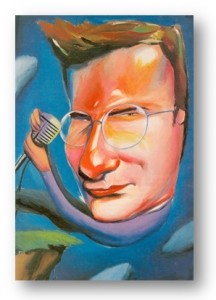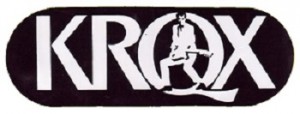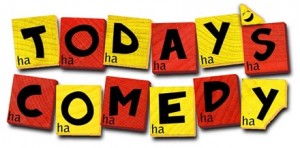When it comes to innovation, there are people who have one great idea that becomes their entire focus and legacy. They become famous for doing one amazing thing or a single accomplishment.
 Then there are people who are fountains of ideas. They are driven by always being around something new and interesting and only satisfied when they are looking toward the next big thing.
Then there are people who are fountains of ideas. They are driven by always being around something new and interesting and only satisfied when they are looking toward the next big thing.
George Gimarc is definitely in the latter category. When we started “Radio’s Most Innovative,” we promised to highlight people that perhaps you haven’t heard of. And if you’re not from Dallas, Texas, you may not know George.
During his career, he’s been deeply involved in the birth of multiple formats, including Classic Rock and Alternative. He is also the person who developed the only radio format to ever receive a patent.
But radio isn’t his only area of expertise. George has also authored several books and is a music historian. On this “Innovation Friday,” he shares his reflections about some of the biggest projects he’s been a part of, as well as what the radio industry can do to create a more innovative environment.
JM: When Alternative radio spread across the country in the late ’80s, you were an integral part of one of the pioneering stations in the format, KDGE (The Edge)/Dallas. What challenges did you face bringing Alternative to a city that wasn’t on either coast?
GG: As a huge fan of Alternative music who had been involved in Alternative radio programming since mid-1977, I was totally convinced that the format could work not only on college radio or in Los Angeles, but in middle-America. In 1979, Rick Carroll showed American radio that alternative music worked as a hit radio format. I built on that premise, styling ‘The Edge’ to the tastes of the region.
A vital part of that mix was an independent owner, with an inexpensive signal and a desire to do something brave and different, add in creative promotions, and radio experienced the perfect storm of innovation. The format turned into an immediate success because it resonated with an underserved audience. Dallas was, and still is, one of those rare large markets without ‘college radio,’ so we had freedom to set new markers and own them.
 There was, as you point out, undoubtedly a bias toward Alternative stations near large bodies of water. They got better promotions, better shows, and more radio press. We contented ourselves with large ratings, earnings, the ability to break records at our own pace, and the respect of musicians.
There was, as you point out, undoubtedly a bias toward Alternative stations near large bodies of water. They got better promotions, better shows, and more radio press. We contented ourselves with large ratings, earnings, the ability to break records at our own pace, and the respect of musicians.
JM: What do you think of the state of Alternative radio today? Is there room for innovation in the format?
GG: There’s room for innovation in every format. Radio just has to play to its strengths. Now, with digital as a viable first source for Alternative music, radio has to bring more to the table. Local flavor, personality, insight, and friendship can be assets for local radio. In those halcyon days at KDGE, we got out into the community daily, gave away a ka-jillion small prizes, and talked to people one-on-one. Interns didn’t do it – the air staff did. Bring that back and you’ll have a fresh generation of listener-fans for decades.
This isn’t new; it’s a return to radio’s roots. Back in the late ‘40s, radio was in a crisis because of the rise of television. Radio, which was home to drama, game shows, comedies and other scripted programs, changed by becoming a delivery system for songs and patter. It became local. Now we are at a similar crossroads. Radio has to become something else, filling the need of the listener. What can we do that Spotify can’t? Many things. There are several solutions out there. Have the courage to try something new.
JM: You also were part of one of the first Classic Rock stations, KRQX-AM. How was the idea received by listeners?
 GG: The basic idea behind KRQX was filling listener needs that weren’t being met. At the time (July of 1983), KZEW was constantly getting requests for Clapton, Hendrix, Beatles, Byrds, etc., yet had no time to play them among the current crop of Pat Benetar, Men At Work, Bob Seger, Toto, and Foreigner (songs). I suggested taking the AM station that was struggling with an expensive news talk format, and creating a station that would fill in the gap and compliment the playlist of KZEW-FM.
GG: The basic idea behind KRQX was filling listener needs that weren’t being met. At the time (July of 1983), KZEW was constantly getting requests for Clapton, Hendrix, Beatles, Byrds, etc., yet had no time to play them among the current crop of Pat Benetar, Men At Work, Bob Seger, Toto, and Foreigner (songs). I suggested taking the AM station that was struggling with an expensive news talk format, and creating a station that would fill in the gap and compliment the playlist of KZEW-FM.
When I created the station, all the acts that lived in the space between Oldies radio and 1983 found a fresh venue. The only challenge with the format was that once the idea worked, John Shomby took the new Classic Rock format from AM and rolled it out onto the re-christened KZPS on FM. At a time when music programming had almost completely shifted from AM to FM, it proved an impossible task to fight FM.
JM: You recently launched the all-comedy network. What did you do to make the product stand out from other attempts at comedy-based formats?
 GG: Today’s Comedy, in many senses, is very much like programming the Edge. The acts are on indie labels, and play small clubs. There is no national promotional support. There are no charts. It’s all programmed by fresh ears and gut-feel.
GG: Today’s Comedy, in many senses, is very much like programming the Edge. The acts are on indie labels, and play small clubs. There is no national promotional support. There are no charts. It’s all programmed by fresh ears and gut-feel.
While my predecessor leaned heavily on classic acts like Seinfeld, Cosby and Jeff Foxworthy, I built around newer, hipper comedians like Louis C.K., Aziz Ansari, Bill Burr and Marc Maron. We have what might be the largest air library of any format (18,000 tracks) and go for the longest possible turnover of bits, but maintain a tight artist-centric (music-like) turnaround because our listeners stay glued to Today’s Comedy.
JM: You also developed Radio SASS (Short Attention Span System), a system for editing and time compressing songs that cuts down their duration, allowing stations to play more music in an hour. Do you see this as a viable format?
GG: I conceived the Radio SASS protocol back in 1999, and set in motion what would culminate in the first patent(s) ever granted a radio format. I saw that people were punching out of songs constantly, and typically, at the same time – right after that second verse.
A decade later, there are many studies showing people in their 20s and 30s will skip thru their favorite songs in search of the next one. So why not program a radio station that reflects how people listen, driving up TSL and at the same time, allowing a station to double its playlist, break songs faster, and broaden their re-currents and gold? It’s a format that was innovative and cutting edge in 2000, and should be really obvious in 2014.
Finally, a station can do all the things on the industry wants list: 1) have a unique market position, 2) play more hits than anyone else, 3) be the place where it happens first, and 4) give more support to musicians with more airplay possibilities.
 JM: There is some controversy regarding SASS,. including artists who are upset that you are altering the compositions. What do you think about the issues surrounding the concept?
JM: There is some controversy regarding SASS,. including artists who are upset that you are altering the compositions. What do you think about the issues surrounding the concept?
GG: This is not a solution for all radio. It was designed specifically for CHR where songs are heard in a multitude of mixes and edits already, where listeners have not yet cast a particular version in bronze in their memory. If a label gets twice as many songs played, and a station has twice as many slots for new potential hits, it’s a boon to the artists and the industry. Remember – ALL songs on radio are simply advertisements to induce the public to buy the download. Playing a short version is akin to a movie trailer. Fans buy the real thing, enticed by the preview.
JM: You’ve been involved with a lot of innovative stations and projects. What have you found is the biggest hurdle to successful innovation?
GG: Lack of vision is the biggest hurdle. The phrase “We’ve never done it like that before” and the business mindset that “Saying ‘no’ won’t hurt you, let somebody else take the first chance,” gets in the way of innovation. Many people are so worried about their place in the corporate tree, that they stifle innovation on a daily basis. I’d love to see less centralized control and less reliance on the micro-measure of ratings.
For my whole career I’ve lived by George Bernard Shaw’s quote, “You see things and you say ‘Why?’ but I dream things that never were, and I say ‘Why not?’” The keys to innovation are: imagination, courage, persistence, a thick skin, and nimble problem solving.
JM: What advice do you have for people with innovative ideas that don’t know how to get started?
GG: Find like-minded innovators and be galvanized by their journey. Recently, the History Channel had a series called, The Men Who Built America, an inspiring story of innovators who changed the face of America as we know it. Reading autobiographies of people who have achieved greatness in their field with sound business practices is a good start as well. Once that foundation is laid, find trustworthy innovators in your field and seek wisdom about problem solving, sourcing solutions and keeping your head in the right place moving forward. Also important–learn about business realities and how to read and understand a contract.
JM: What do you think radio can do as an industry to foster more innovation?
GG: Be open to, even driven by, audacious ideas, tempered by the bottom line, rather than allowing fear, timidity and budgets to dictate a same old/same old mindset. Recognize, reward and be open-minded enough to jump on timely, fresh ideas.
Everybody talks about innovation, but few have the courage to really plant the flag and make bold moves. When a small player comes up with something new, form a partnership and grow the idea, don’t buy it and try to wedge it into the big machine. It might not fit.
Special thanks to George and to Mike Stern for writing this week’s post for “Radio’s Most Innovative.”
INNOVATION QUOTE OF THE WEEK
“Innovators are inevitably controversial.”
Eva Le Gallienne
More of Radio’s Most Innovative
- Radio’s Most Innovative: Radioplayer
- Radio’s Most Innovative: KSHE’s Real Rock Museum
- Radio’s Most Innovative: XAPPmedia
- Radio’s Most Innovative: Zach Sang
- Radio’s Most Innovative: Norm Pattiz/PodcastOne
- Media And Technology In 2025: Believe It Or Not! - April 18, 2025
- In Radio, You Just Never Know - April 17, 2025
- The Secret To Making A Great Podcast (And Great Radio) - April 16, 2025





George Gimarc is a perfect choice for inclusion in this feature. In fact, I think his middle name is really “Innovation” and he’s been keeping that a secret from us all this time.
(Also, he’s a heckuva nice guy.)
Couldn’t agree more. Thanks for reading our blog and commenting.